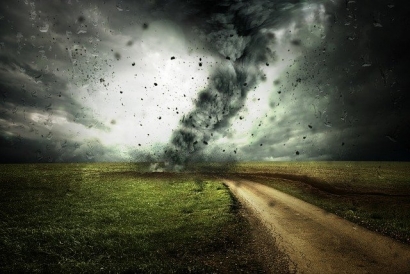
However, unprecedented disasters, such as tornadoes, hurricanes, and fires, impose other significant implications on society. In 2012, Hurricane Sandy left 7.5 million households without electricity across 15 states. Additionally, a recent publication released by Climate Central reported a 67% increase in major power outages due to inclement weather since 2000.
In the wake of climate change-induced disasters, the question remains how to ensure that the nation’s energy supply and infrastructure are protected and prevent disruptions in energy distribution.
A Solutions-Based Approach
Many unknowns surround what causes climate change and natural disasters; however, scientific evidence has indicated a link between human activity and the warming planet. Massive fires uproot families each year, and dangerous floods destroy households neighborhood by neighborhood.
While meteorological patterns cause increasing interruptions to our everyday lives, the demand for sustainable energy is growing. The current state of the nation’s electrical grid is plummeting as extreme temperatures and storms barrel through communities, and although renewables alone may not yet serve as a reliable fix to this dire situation, investing in renewable energy is a step in the right direction.
Maintaining our electricity during these events is critical. The following considerations may offer solutions to safeguard our electrical energy in the future.
Undergrounding transmission lines is one of the most common ways to weatherproof our energy in hard-hit areas. However, doing so comes with a high price tag that many deem may not be worth implementing everywhere. Generally, depending on where you live, industry experts state that burying powerlines cost $1 million per mile at a minimum, which is approximately five times as expensive as overhead wires.
Although undergrounding is a reliable way to protect electricity in case of fire or wind damage, buried lines are still susceptible to flooding, and repairs are costlier and can take longer to complete. Currently, the transition to underground lines also rests in the hands of ratepayers rather than the government.
Nevertheless, since much of today’s existing electrical grids are crumbling, a stronger focus should be placed on rectifying system failures and automatically burying lines where newer construction occurs.
Today, the United States gets 3% of its energy from solar power, and an estimated 1 in 7 homes should have rooftop solar panels by 2030.
When considering extreme weather events, extended blackouts and the future of energy, microgrid distributed generation—solar power, wind power, combined heat and power (CHP) and batteries—is on track to becoming an innovative solution. Despite the saying that solar means going “off the grid,” households remain connected while solar panels send excess energy to the electricity grid.
Utility companies can tap into this stored excess energy if the grid collapses during a natural disaster or weather event. Distributed generation operates through lower-voltage lines and can deliver clean power to customers who experience outages.
Microgrids will be particularly critical for hospitals, treatment facilities, manufacturing plants and airports that need continuous electricity to operate. Because solar is free, it’s also a less expensive alternative for reliable energy in the future.
Wind energy technologies have advanced over the years, supplying another possibility for electricity generation. In 2020, wind turbines accounted for approximately 8.4% of the total utility-scale electricity production in the United States.
When faced with an uncertain future regarding climate change, unprecedented disasters and energy, investment in on-shore and off-shore wind turbine farms offers excellent potential. Wind power isn’t just cost-effective, but the wind sector currently hires 100,000 workers in manufacturing, installation and maintenance. The growing wind energy industry also intends to add another 600,000 jobs by 2050.
Currently, remote locations may benefit the most from wind power. However, new transmission lines in metropolitan areas can help expand the wind energy supply by 35% by mid-century. This means that cities currently unable to receive wind-powered electricity may benefit from it in the future.
Future of Energy: No Time to Waste
Climate change and natural events like tornadoes, hurricanes, and fires are not slowing down anytime soon. To stay ahead of disaster-related damage to our electrical grid, it’s critical to protect our energy and keep the lights on with new sustainable technologies and renewable resources.

